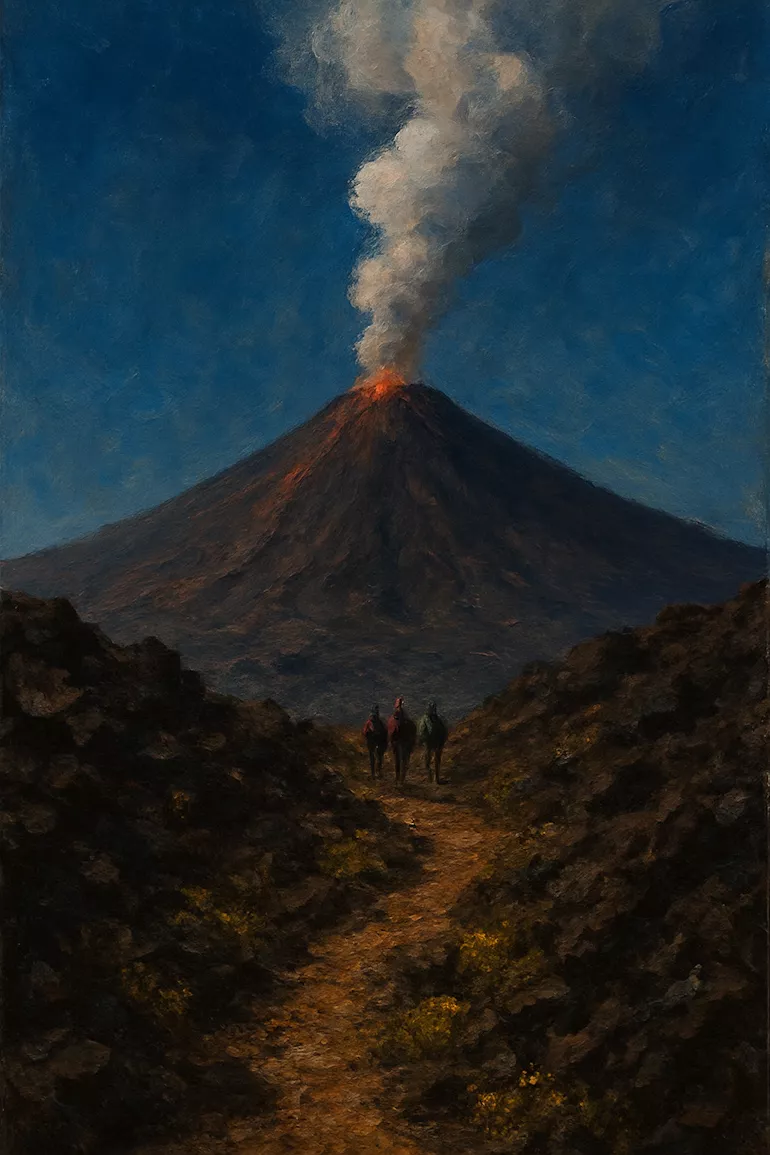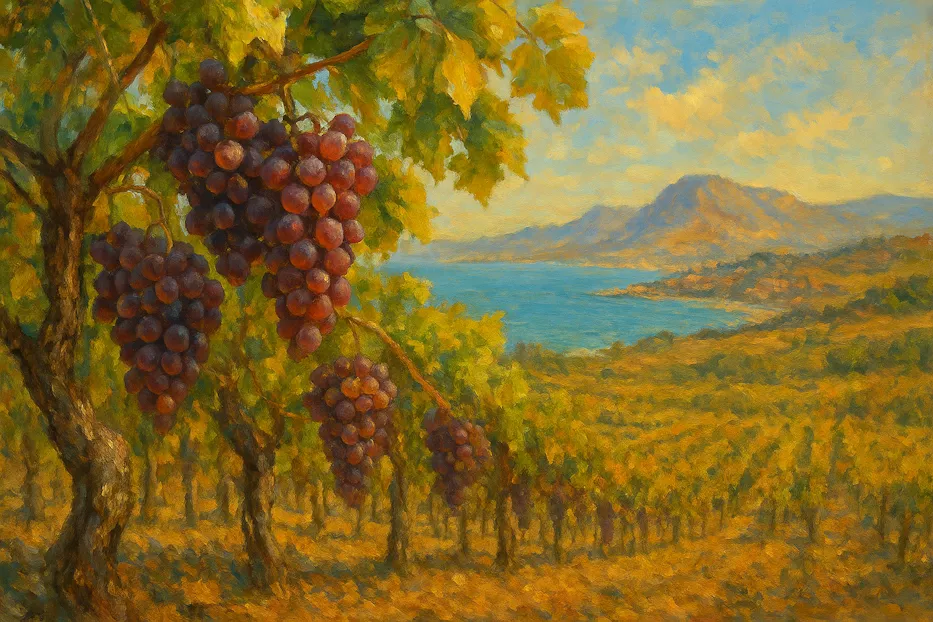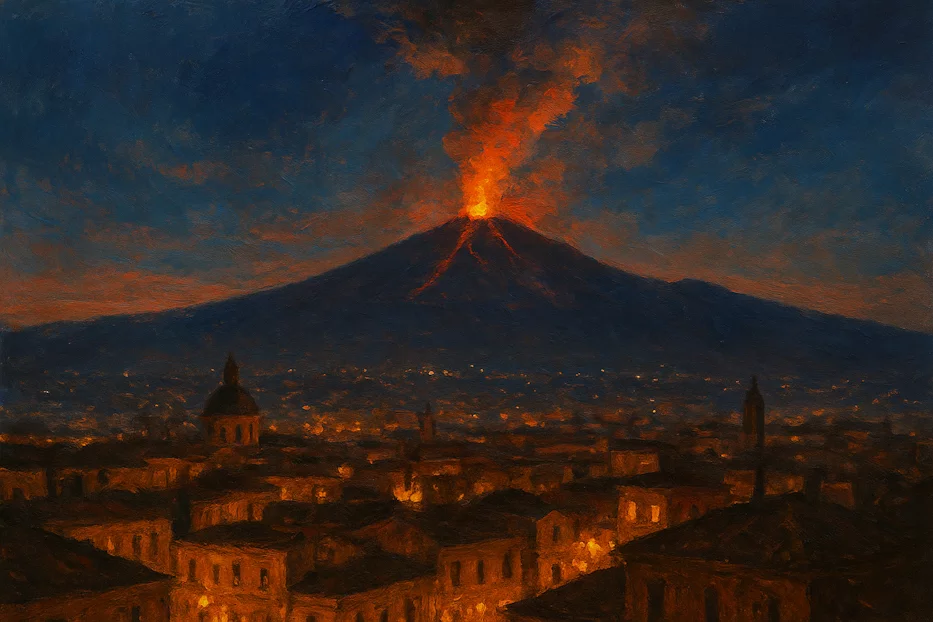There are few places in Europe where nature feels as raw, unpredictable, and alive as Mount Etna.
Rising more than 3,300 meters (10,827 feet) above the Ionian coast of Sicily, Europe’s highest and most active volcano breathes in sudden bursts — sometimes a whisper of smoke drifting into blue skies, other times a fountain of fire spilling down its slopes. For Sicilians, it is a muntagna — the mountain. For visitors, it is both a stage of drama and a reminder that the Earth beneath our feet is very much alive.
Table of Contents
A Volcano in Myth and Memory
Etna’s story has always been larger than life. In Greek mythology, this was the forge of Hephaestus, god of fire, where the Cyclops hammered thunderbolts for Zeus. Romans feared its rumbling as the rage of giants imprisoned beneath the earth. Throughout history, eruptions have shaped both landscape and culture — from the destruction of Catania in 1669 to the lava fields that today nurture vineyards.
Unlike dormant volcanoes turned into tourist viewpoints, Etna Mount continues to write its own story in real time. For those who visit, the thrill lies in that tension: awe mixed with unease, beauty threaded with risk.
Getting to the Mountain
Most travelers begin in Catania, Sicily’s bustling second city, just half an hour from the volcano’s southern slopes. Its airport connects easily with Rome, Milan, and major European hubs. Renting a car through DiscoverCars gives visitors the freedom to reach mountain villages at their own pace, from Nicolosi to Zafferana Etnea. Roads are winding but scenic, climbing through citrus groves and lava-strewn fields.
For those arriving from mainland Italy, ferries to Catania or Messina provide another gateway. Booking with Direct Ferries makes it easy to compare routes, whether you’re sailing from Naples overnight or crossing the Strait of Messina from Calabria in just 30 minutes.
From the glamorous resort town of Taormina, Etna is a classic day trip, with travel times of about 90 minutes by car. Organized excursions — available via GetYourGuide — pick up directly from hotels, sparing travelers the logistics of driving and parking on the mountain itself.

A Mountain of Many Seasons
One of Etna’s wonders is its ability to change personality with the seasons.
Spring brings carpets of wildflowers across the lower slopes, ideal for hikers seeking cool air and vivid landscapes.
Summer delivers the clearest skies and busiest trails. The sun can be intense, but evening visits reward with glowing sunsets and — if fortune allows — glimpses of lava against the night.
Autumn belongs to the vineyards. Around towns like Linguaglossa and Randazzo, harvest festivals celebrate grapes ripened in mineral-rich soil. This is the season for wine tastings and cellar tours, where Etna Rosso and Etna Bianco tell their own volcanic story.
Winter transforms the volcano into Europe’s southernmost ski resort. At Piano Provenzana and Nicolosi, ski lifts operate when snow conditions allow, offering the surreal experience of skiing with active craters on the horizon.
Walking on Fire
Etna can be experienced at many levels. The most popular route begins at Rifugio Sapienza on the southern slope, where shops and cafés perch at 1,900 meters (6,233 feet). From here, a cable car ascends to 2,500 meters (8,202 feet), gliding over fields of hardened lava. Travelers can continue by jeep to about 2,900 meters (9,514 feet), then hike with licensed alpine guides — the only way to approach the summit safely.
For many, however, there’s no need to reach the top. The nearby Silvestri Craters, accessible on foot from Sapienza, are shallow but dramatic reminders of past eruptions. Families often wander here, the black rock crunching underfoot, before pausing for gelato or arancini at the cafés below.
On the northern slope, Piano Provenzana offers a quieter experience, with trails through pine forests and views stretching to the Mediterranean. Lava caves, such as the Grotta del Gelo, reveal hidden chambers where ancient flows cooled into tunnels of frozen history. Guided visits — often booked through GetYourGuide — add a sense of adventure and safety, especially for those unfamiliar with volcanic terrain.
The Taste of Etna
To know Etna is also to taste it. The volcano’s soil, rich with minerals, produces wines that have captured global attention. Reds made from Nerello Mascalese are elegant, smoky, and earthy, while whites from Carricante grapes are crisp and mineral-driven. Vineyard tours often pair tastings with rustic lunches, showcasing olive oil, honey, and cheeses from the surrounding villages.
Bronte, on the western slope, is famous for pistachios — so prized they are called “green gold.” Zafferana Etnea produces honey in dozens of varieties, from acacia to chestnut. These products, born of volcanic soil, are a reminder that Etna is not just destructive but generous.

Discover Sicily Island Wines: A Journey Through Tradition and Flavor
To taste the wines of Sicily is to experience the island itself — a place where fiery mountains meet golden shores, and every vineyard carries a story in its soil.
Life With the Volcano
For Sicilians living on Etna’s slopes, the volcano is both threat and companion. Ash often drifts into villages, coating cars and rooftops. Lava flows have destroyed homes and roads, yet life continues — rebuilt, adapted, embraced. Festivals celebrate the mountain’s bounty, while folklore passes down stories of fire and rebirth.
Visitors quickly notice this resilience. In Nicolosi, a small museum tells the history of eruptions. In Catania, the city’s Baroque architecture rises directly atop older lava flows. Etna is not just scenery — it is woven into the identity of the island.
Practical Tips for Travelers
- Safety: Conditions can change quickly. Always check official updates before heading up. Access above 2,900 meters is only possible with licensed guides.
- Gear: Wear sturdy shoes and bring layers — it can be freezing at the summit even in summer. Pack water, sunscreen, and a windproof jacket.
- Transport: Driving offers flexibility (consider DiscoverCars rentals), but tours via GetYourGuide are stress-free for those who prefer not to navigate mountain roads.
- When to Go: Spring and autumn balance good weather with fewer crowds. Winter is ideal for skiing.
A Living Monument
Since 2013, Mount Etna has been recognized as a UNESCO World Heritage Site. The designation honors not just its geological significance but its cultural role in shaping life across Sicily for millennia.
To stand on Etna’s slopes is to witness a rare meeting of danger and beauty. Ash drifts across the wind, vines cling to black soil, and a faint rumble reminds you that the earth here is still in motion. Few places in Europe offer such immediacy — a living monument where history, myth, and nature collide.

